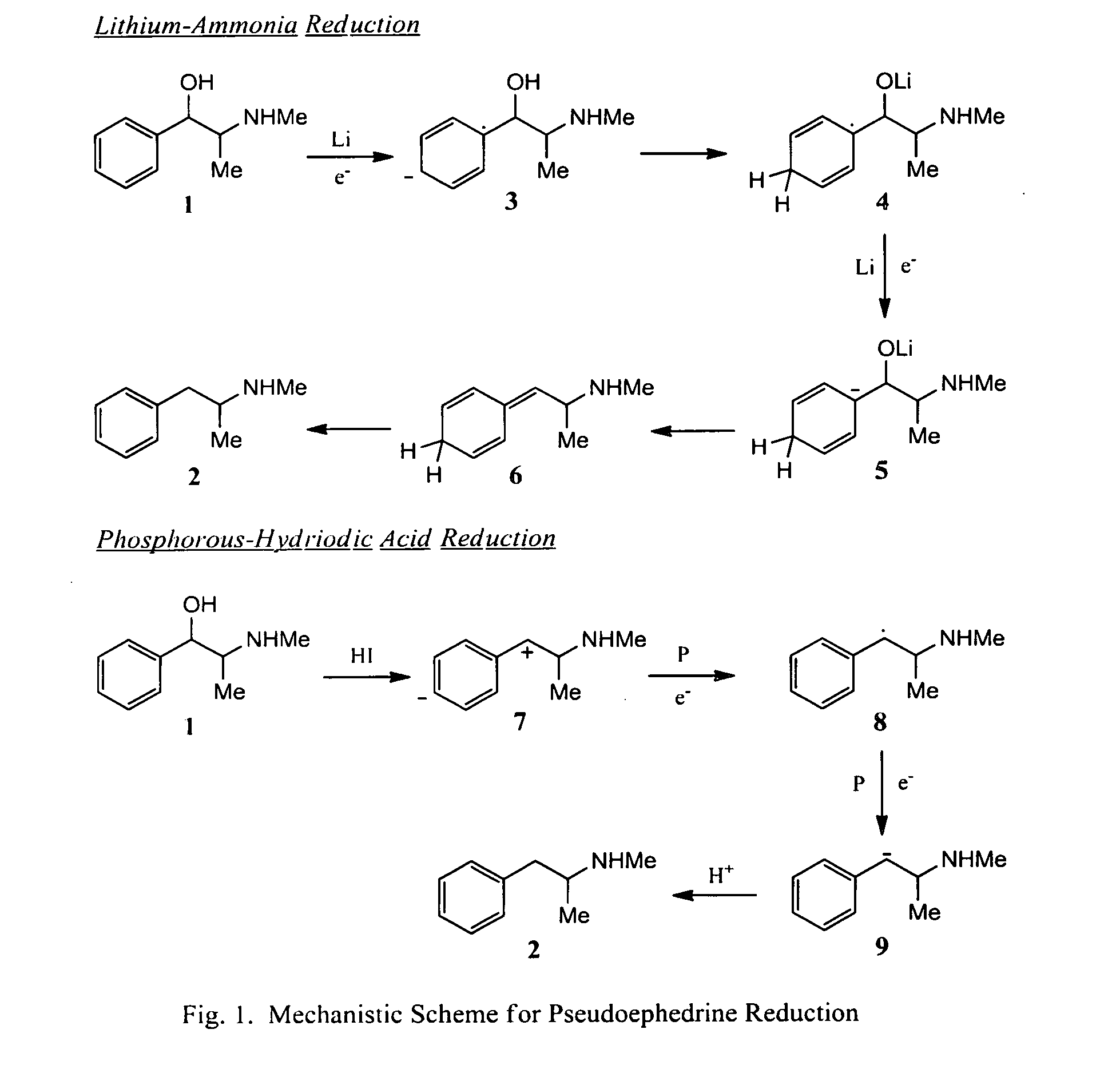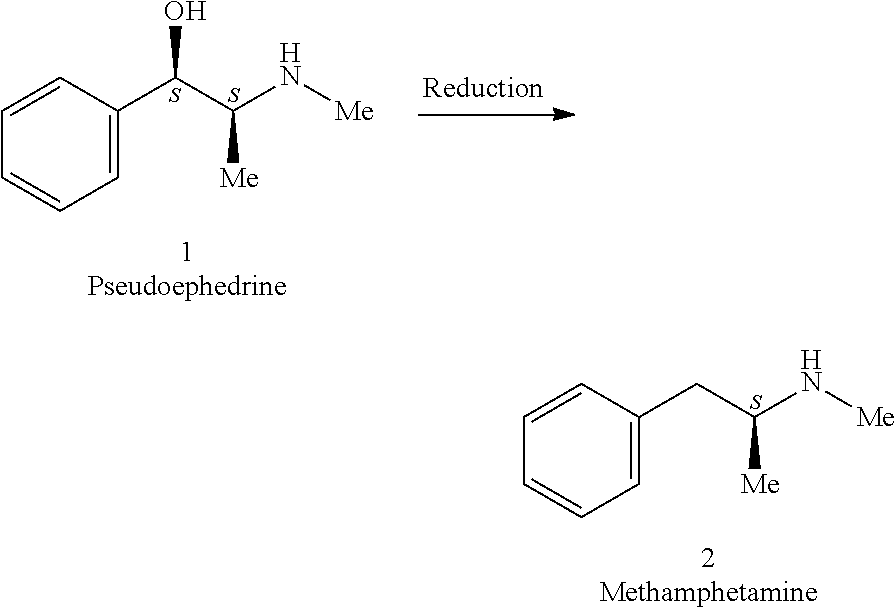Prevention of Illicit Manufacutre of Methamphetamine from Pseudoephedrine Using Food Flavor Excipients
a technology of pseudoephedrine and food flavor, which is applied in the direction of biocide, animal repellants, dispersion delivery, etc., can solve the problems of imposing an enormous socioeconomic burden on the society, serious bodily injury or death of the victims, and severe distribution of this medication
- Summary
- Abstract
- Description
- Claims
- Application Information
AI Technical Summary
Benefits of technology
Problems solved by technology
Method used
Image
Examples
example 1
General Procedure for the Reaction of the Excipient of Formulas I and II and Pseudoephedrine with Lithium in Liquid Ammonia
[0044]Lithium metal pieces (35 mg, 5.0 mmol) were carefully added to liquid ammonia (5-10 mL) at about −78° C. (dry ice, isopropyl alcohol). A dark blue solution began to form within a few seconds. The dark blue solution was stirred at −78° C. for about 3 to 5 minutes. Thereafter, a mixture of the excipient of Formula I (122-166 mg, 1.0 mmol) and pseudoephedrine (165 mg, 1.0 mmol) in anhydrous tetrahydrofuran (3 mL) was added to the dark blue solution. The entire reaction mixture was stirred while the temperature of the reaction was slowly raised to about −20° C. Stirring was continued at this temperature for about 1 hour. The reaction mixture was quenched with saturated ammonium chloride (2 mL) and water (3 mL), and diluted with methanol (5 mL). The reaction mixture was analyzed and quantified for the presence of methamphetamine. The results are given in Exampl...
example 2
General Procedure for the Reaction of the Excipient of Formulas I and II and Pseudoephedrine with Red Phosphorous and Hydriodic Acid
[0045]A mixture of the excipient of Formula I (122-166 mg, 1.0 mmol) and pseudoephedrine (165 mg, 1.0 mmol) in 57% aqueous hydriodic acid (2 mL) was stirred and heated at 90-100° C. for 1-1.5 hours. The reaction mixture was cooled to ambient temperature and diluted with water (2 mL) and methanol (5 mL). The reaction mixture was analyzed and quantified for the presence of methamphetamine. The results are given in Example 3 below.
example 3
[0046]The effect of various excipients in the conversion of pseudoephedrine to methamphetamine is given in Table 1. Clearly, the pyrazine-based excipients are effective in inhibiting the conversion of pseudoephedrine to methamphetamine, with acetylpyrazine being the most effective among all of the pyrazine derivatives tested. It should be all of the excipients in Table 1 are safe [8], and have been used extensively as food flavors in ice cream, pudding, bread, etc. In, particular, the LD50 of acetylpyrazine is >4000 mg / kg. The present invention is not limited to the use of pyrazine-based organoleptics. Other classes of compounds that are used in food flavors described previously can be used can also be used effectively to suppress the formation of methamphetamine.
TABLE 1Relative percentage of methamphetamine formation.Percent MethamphetamineExcipientLi—NH3 ReductionP—HI ReductionNone (Pseudoephedrine only)100100Acetylpyrazine62-Ethoxy-5-methylpyrazine7152-Ethoxy-6-methylpyrazine4132...
PUM
| Property | Measurement | Unit |
|---|---|---|
| temperature | aaaaa | aaaaa |
| volume | aaaaa | aaaaa |
| composition | aaaaa | aaaaa |
Abstract
Description
Claims
Application Information
 Login to View More
Login to View More - R&D
- Intellectual Property
- Life Sciences
- Materials
- Tech Scout
- Unparalleled Data Quality
- Higher Quality Content
- 60% Fewer Hallucinations
Browse by: Latest US Patents, China's latest patents, Technical Efficacy Thesaurus, Application Domain, Technology Topic, Popular Technical Reports.
© 2025 PatSnap. All rights reserved.Legal|Privacy policy|Modern Slavery Act Transparency Statement|Sitemap|About US| Contact US: help@patsnap.com



